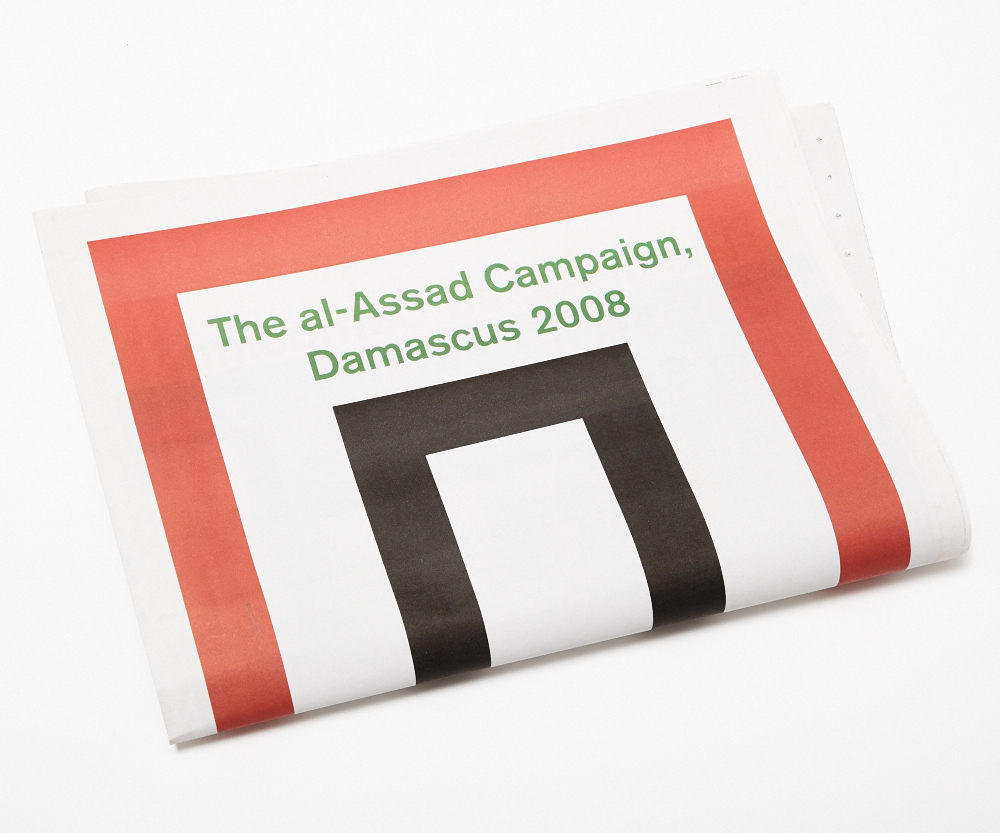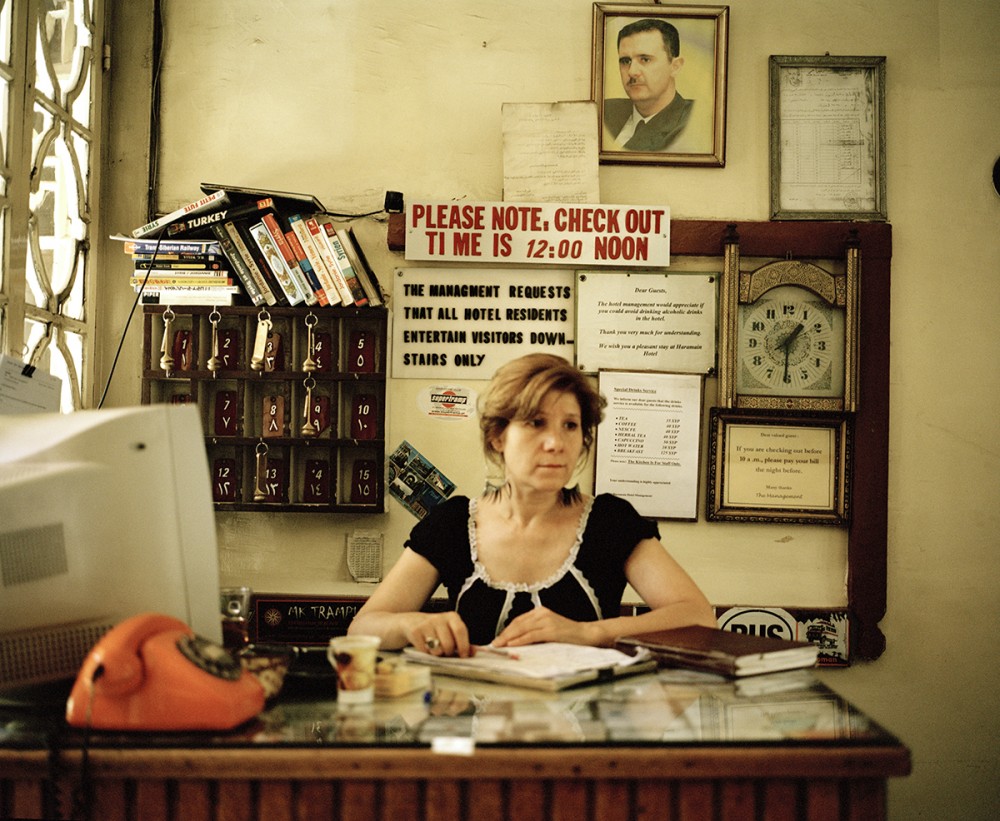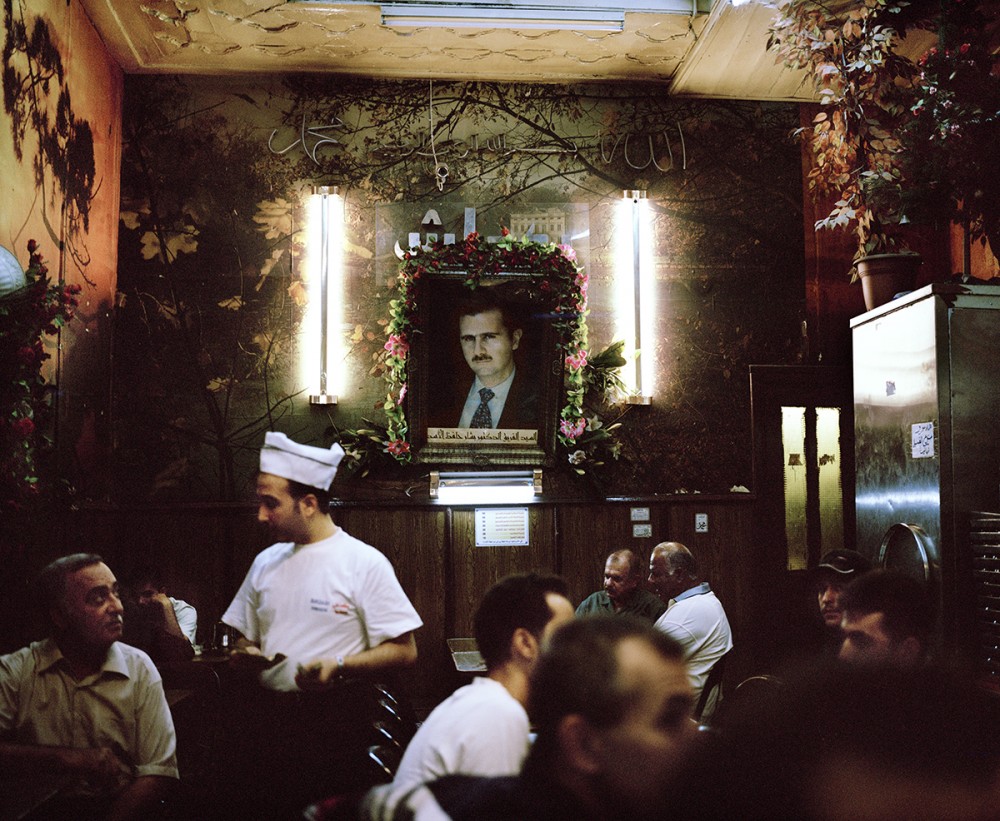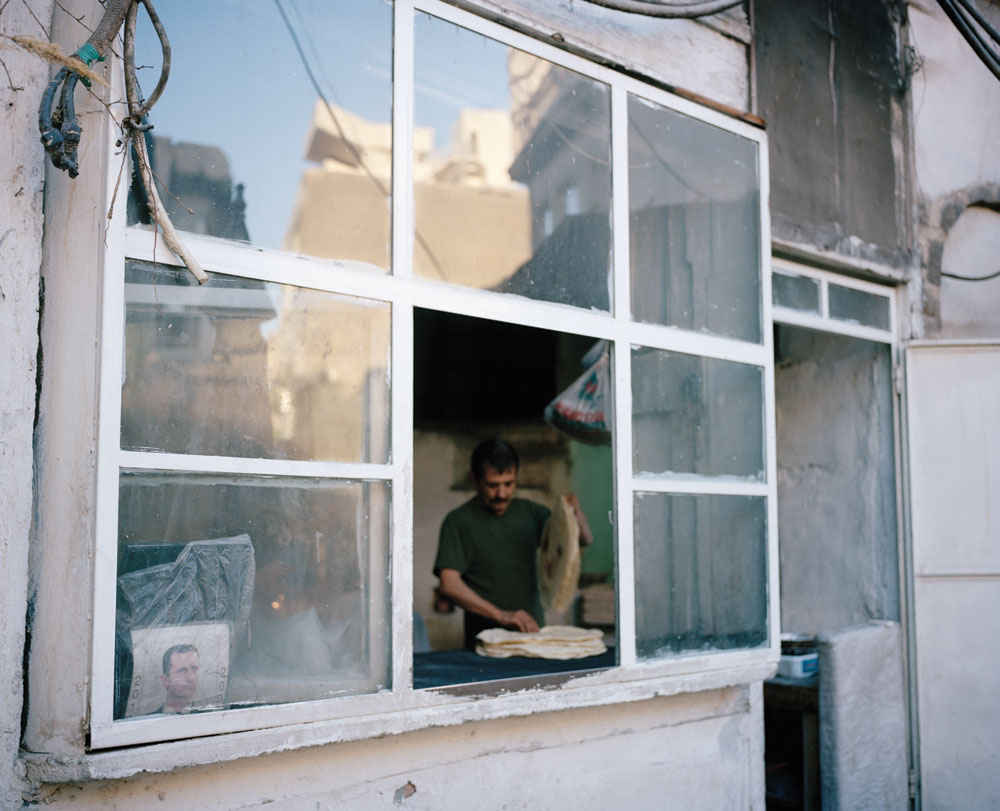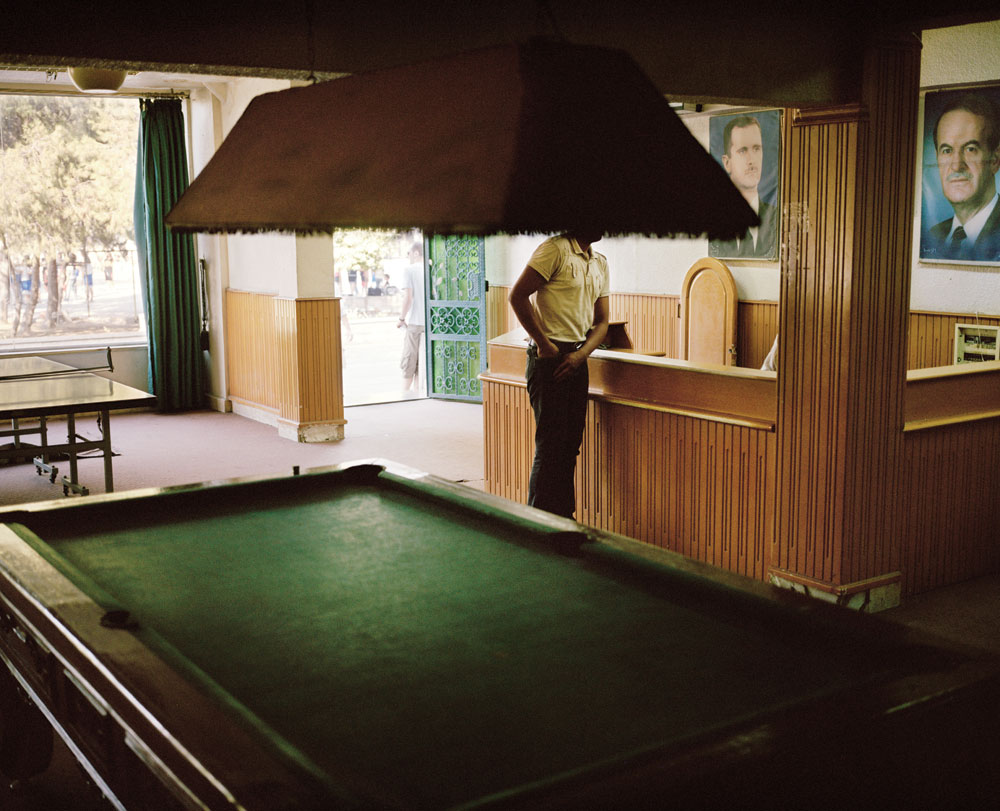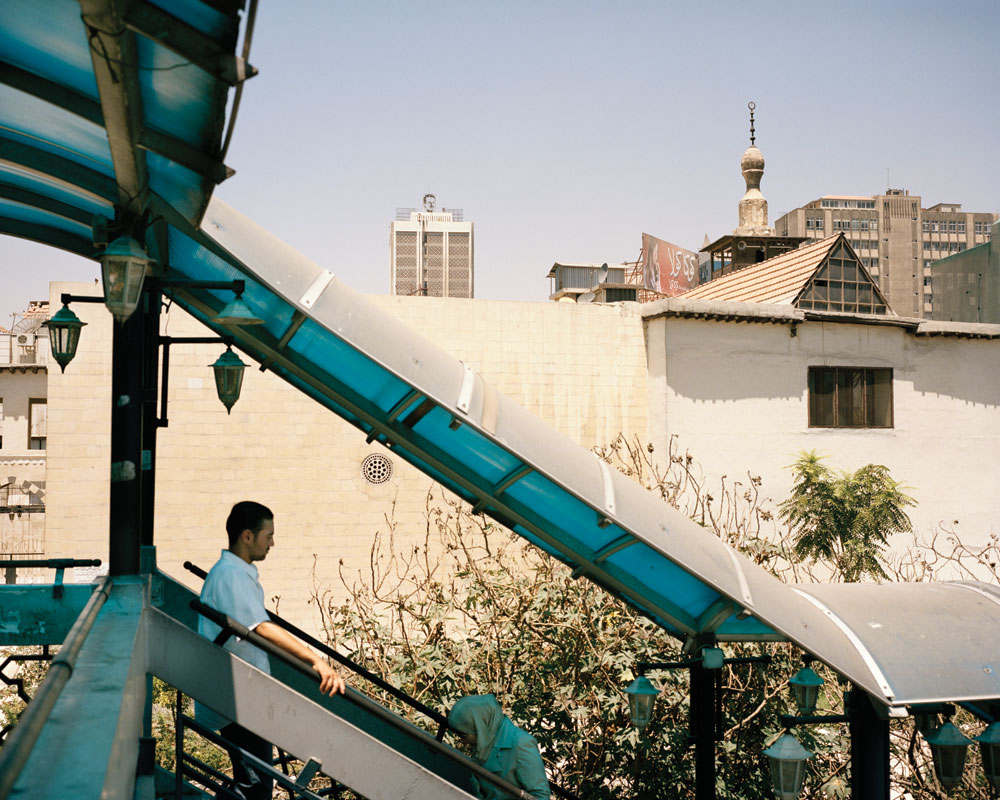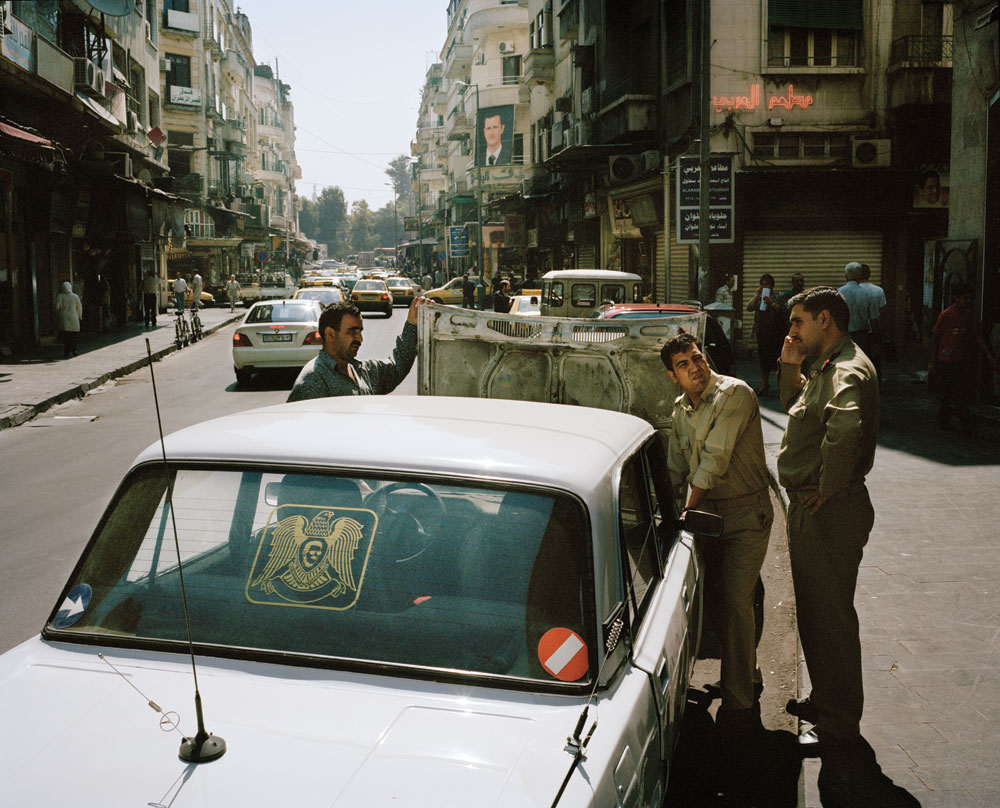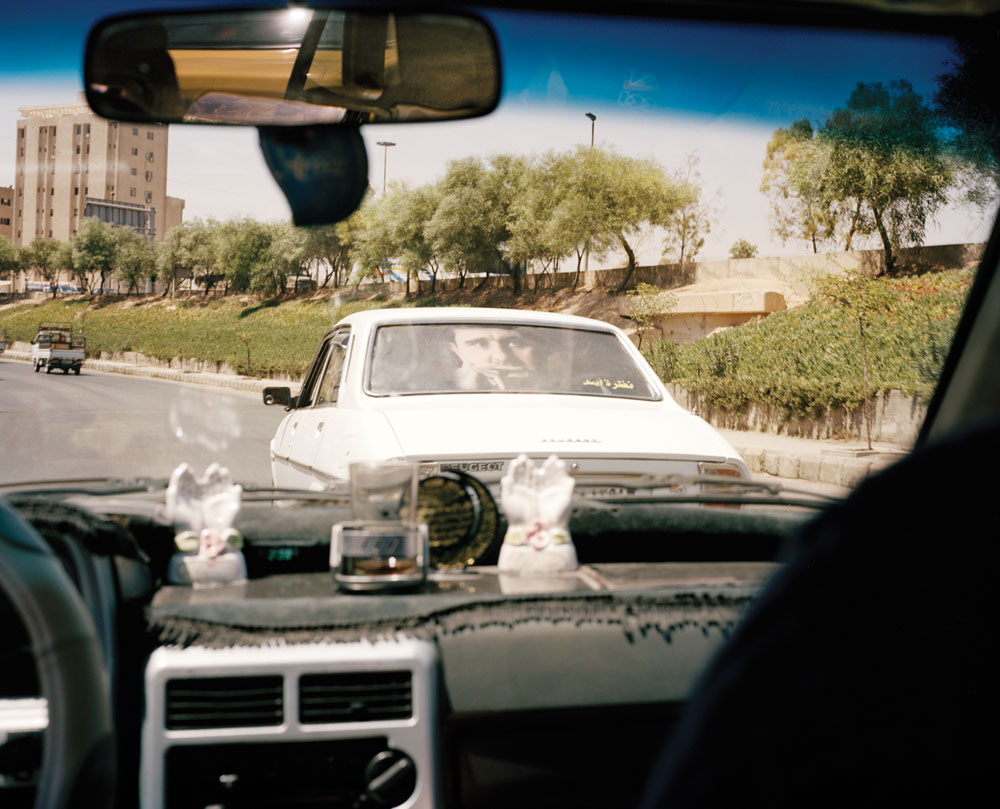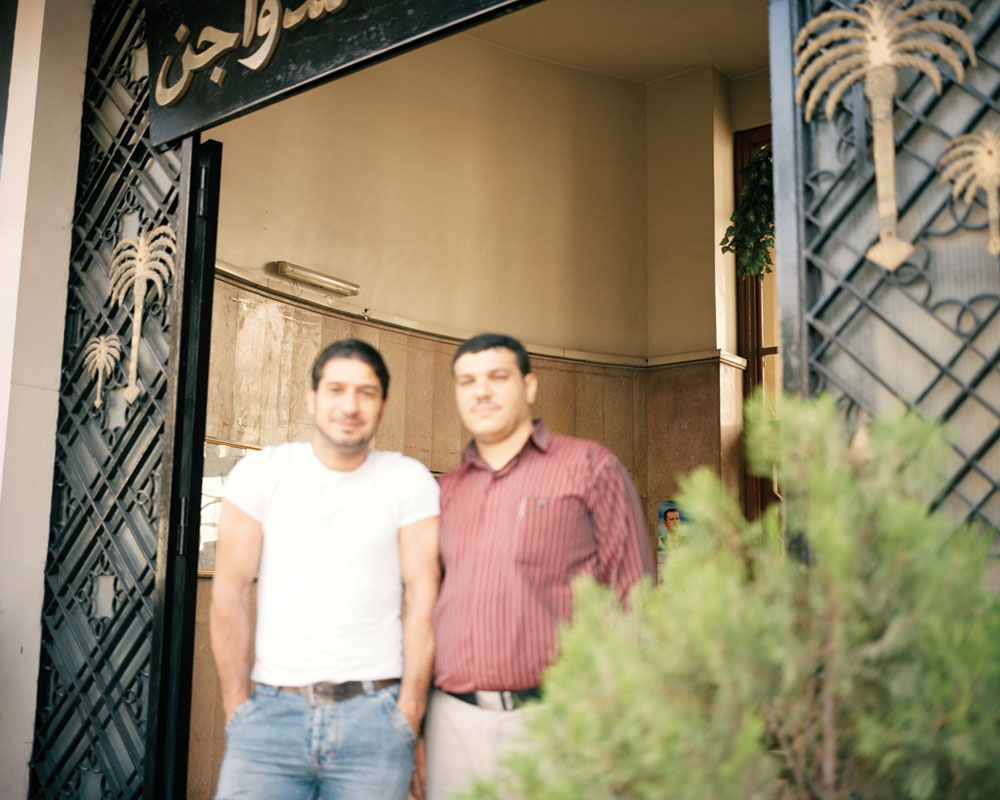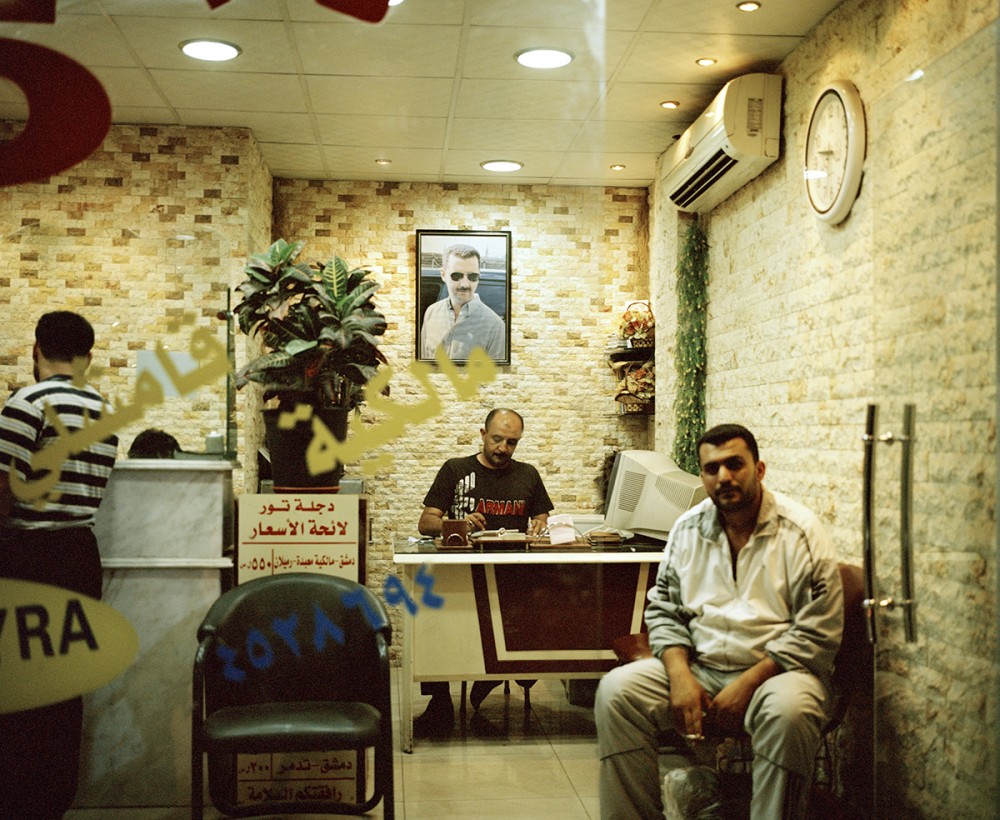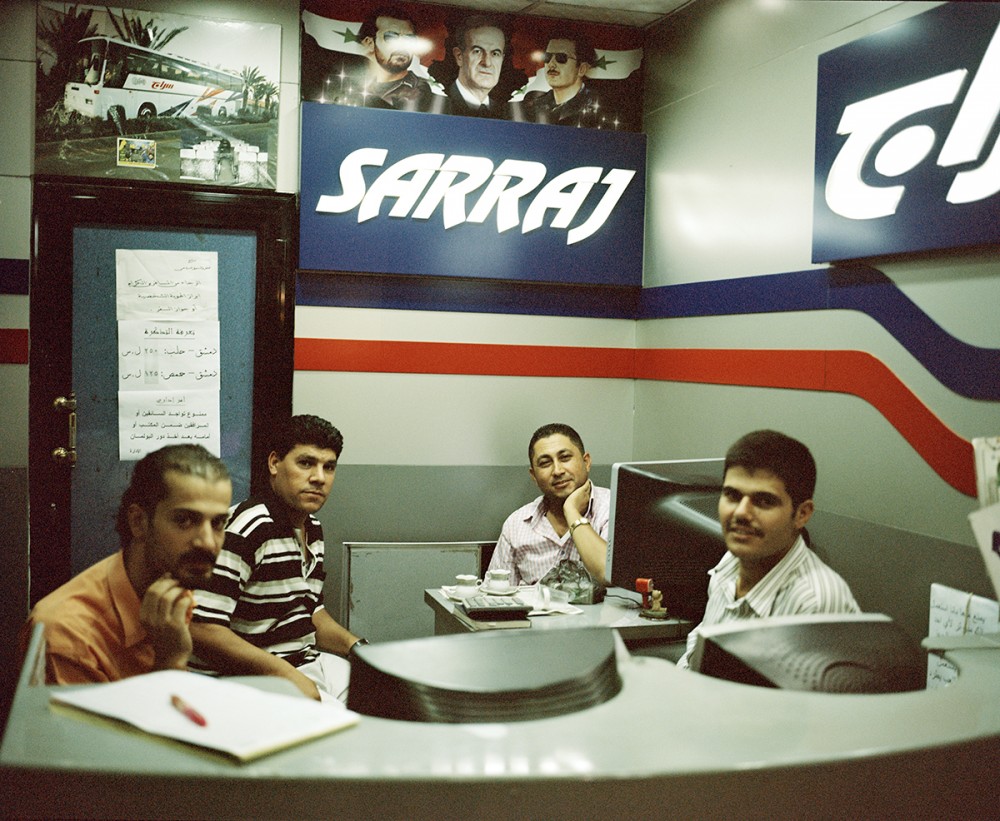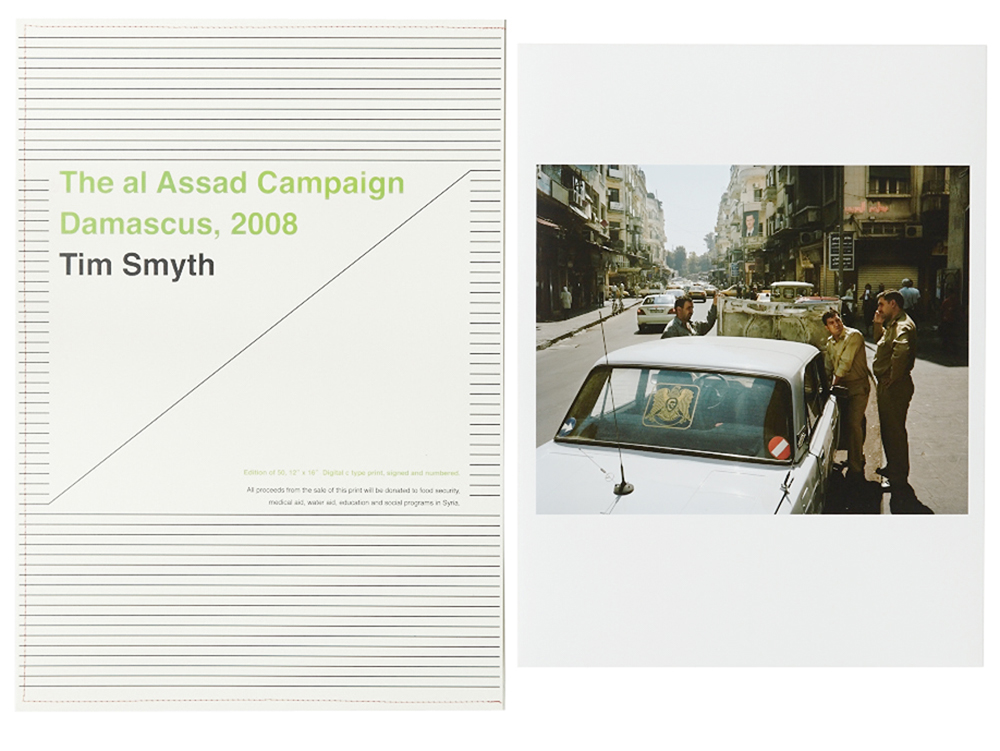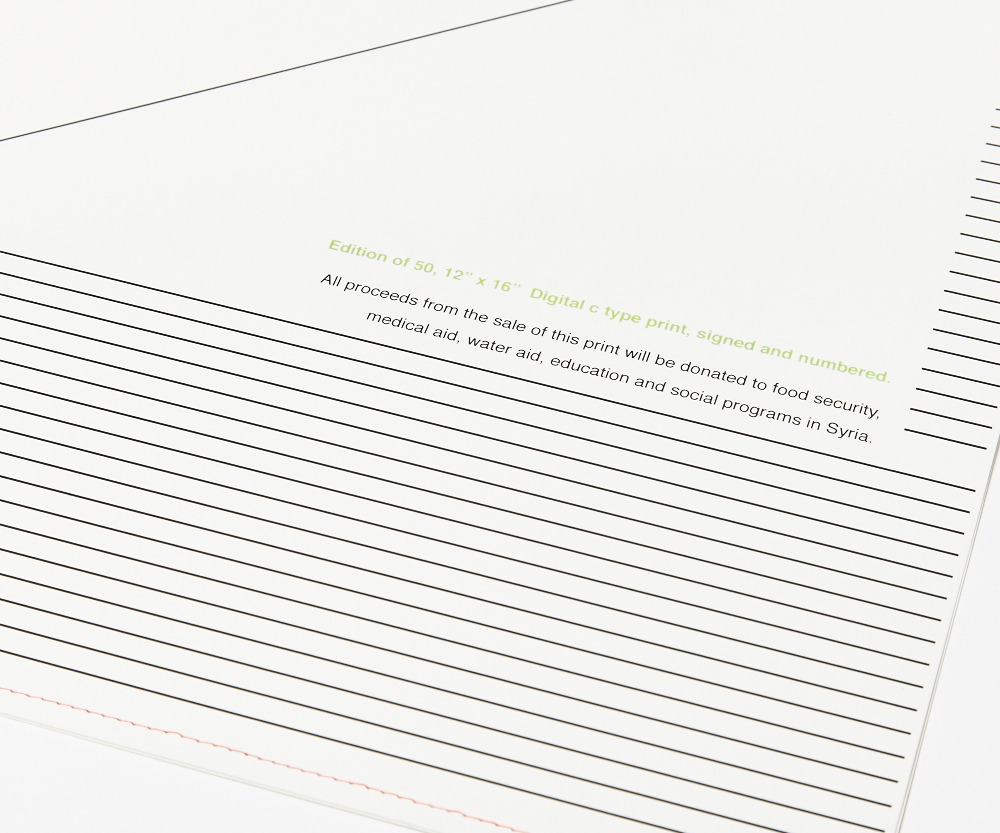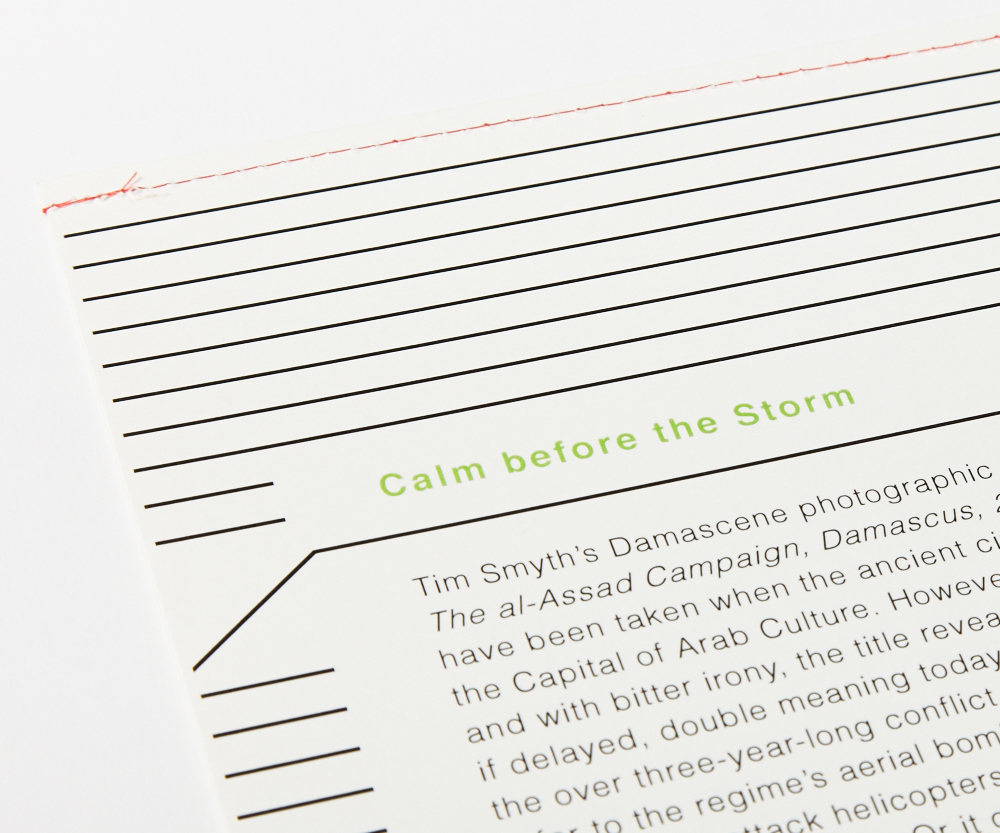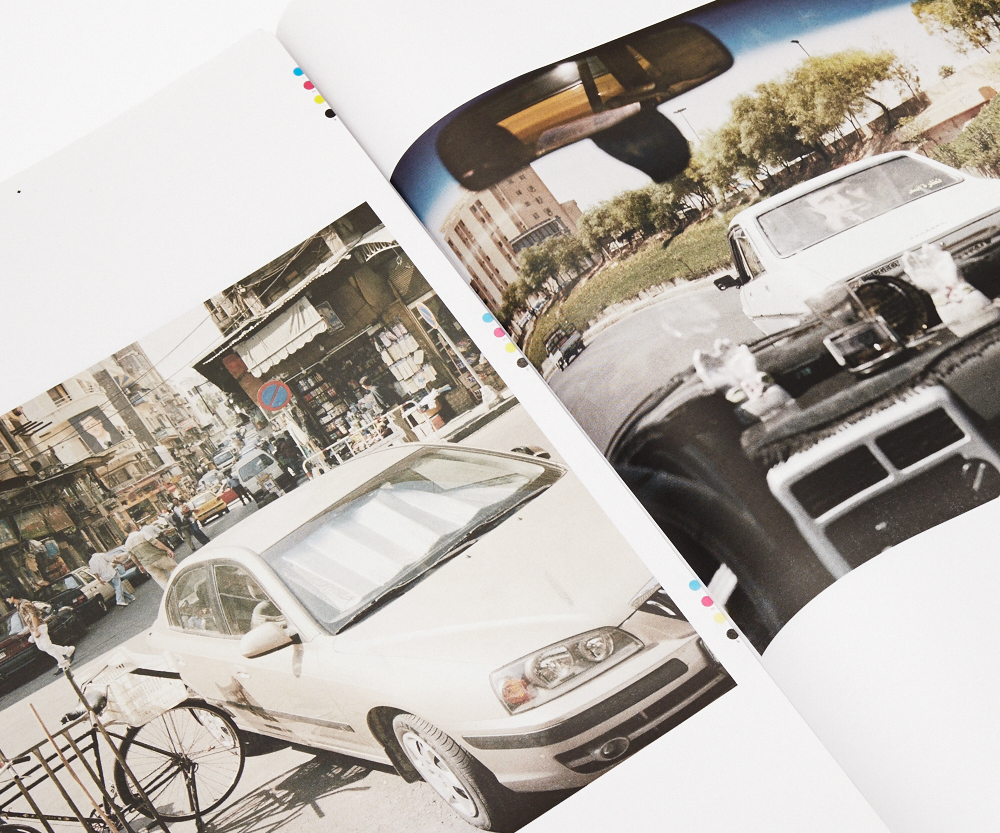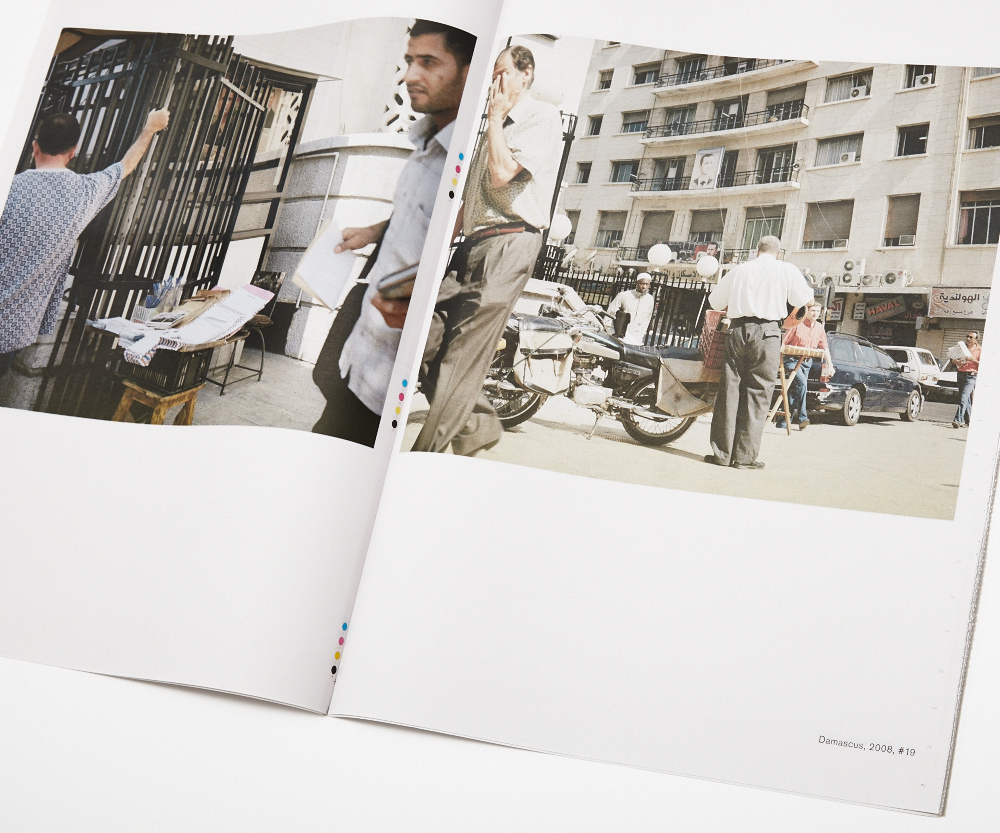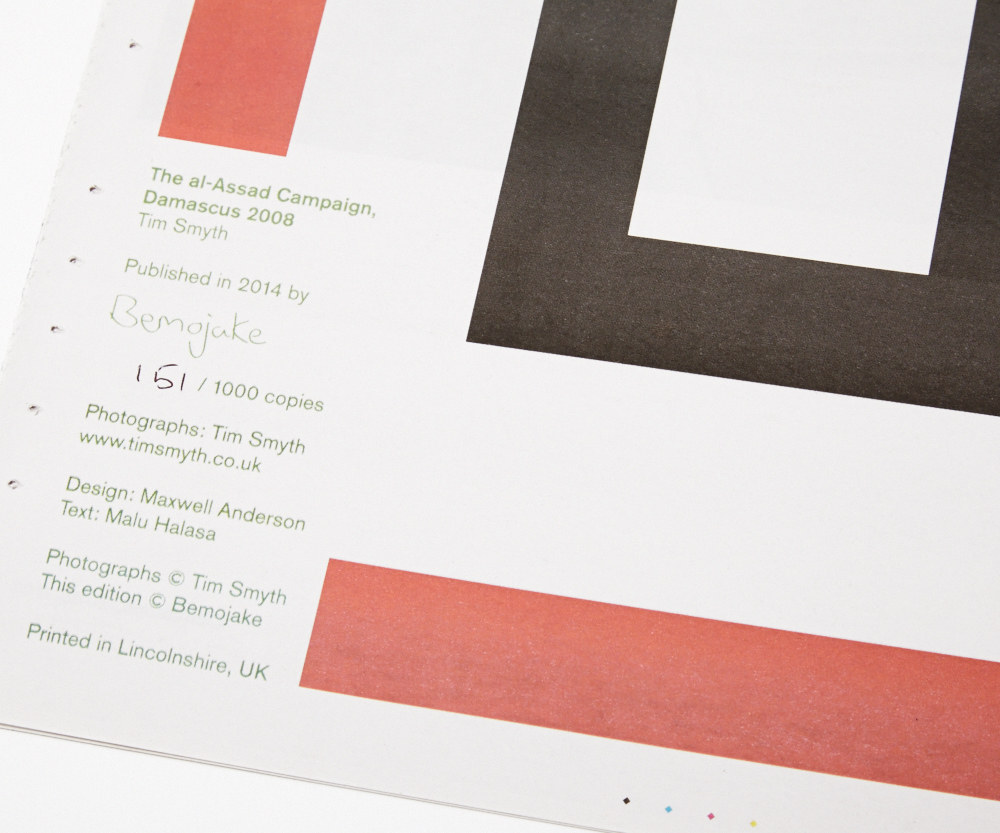Calm before the Storm
Tim Smyth’s Damascene photographic series The al-Assad Campaign, Damascus 2008 may have been taken when the ancient city was named the Capital of Arab Culture. However, and with bitter irony, the title reveals a gruesome, if delayed, double meaning today connected with the over three-year-long conflict in Syria. It can refer to the regime’s aerial bombardment of barrel bombs from attack helicopters in the skies over rebel-controlled areas. Or it can be alluding to the regime’s ‘kneel or starve’ campaign perpetrated in places like the Yarmouk Palestinian refugee camp in Damascus, or in Homs before its fall this May. Previous to the 2011 uprising, Assad’s offensive to win, intimidate and bully the Syrian people into accepting his family’s autocratic rule was as well planned as any military strategy.
In our book Syria Speaks: Art and Culture from the Frontline, coeditor Zaher Omareen writes about Syria as a zone of ‘iconic’ pollution from above; a country overlayered with official family photographs of the dictator, Bashar Assad, his children and his father Hafez. Omareen describes the single-directedness of the regime’s message – “obey me, or else”. The one place not plastered with images of the Great Leader are Syria’s prisons. There, people no longer need any reminder that they are at the mercy of the state torturers.
Tim Smyth’s early morning forays into the Syrian capital is a walk that many have made, as visitors and journalists. At the time his photographs were taken and Damascus was being feted as a cultural capital, Bashar was spouting lofty ideals about “… freedom is a condition of our creativity and creativity and freedom can not be separated …” His speech for the 2008 festivities rings horribly false now.
Morning in Damascus the light is soft and some people on the streets are just starting their day – you can almost touch it by their starched white pressed shirts. It is less a moment of reflection, more like a collective intake of breath, an inhalation, before a teeming city bursts into action. While life on the streets gets underway, the official propaganda photograph of the Great Leader is ubiquitous. It appears on buildings, in restaurants and recreation halls, in the windows of a butcher’s, in offices, on billboards, inside vans and ateliers. Some of the Bashars dominate the space where they have been hung and loom out at the viewer (even if their intent has been softened by fluorescent lighting and a bower of plastic flowers and leaves).
In one photograph of two men in the foyer of a building, Bashar’s image is less a punctuation point and more like old but vivid panelling, a barely noticed backdrop. It is almost as if Smyth’s photographs reflect in their gaze a sense of everywhere and nowhere, simultaneously. They have an eerie quality as though they are capturing the calm before a terrible storm. Perhaps their strength is that they document the way in which ordinary Syrians have lived with the threat of someone who ostensibly projected himself as their friendly brother/leader. As the photographs of The al-Assad Campaign show, the real dictator was lurking in the shadows ready to pounce, hidden in plain sight.
- Malu Halasa, 2014

